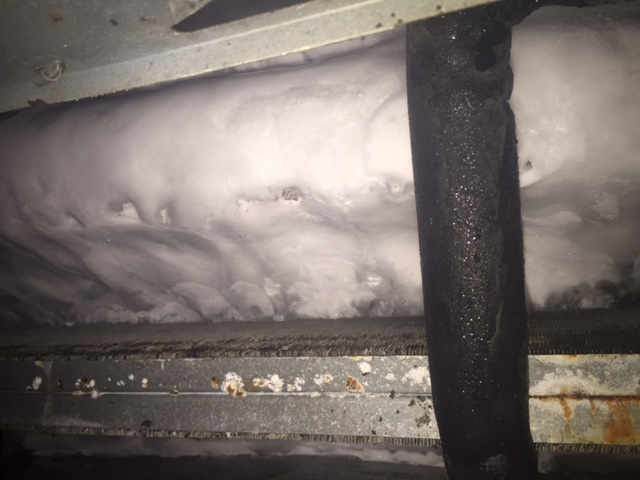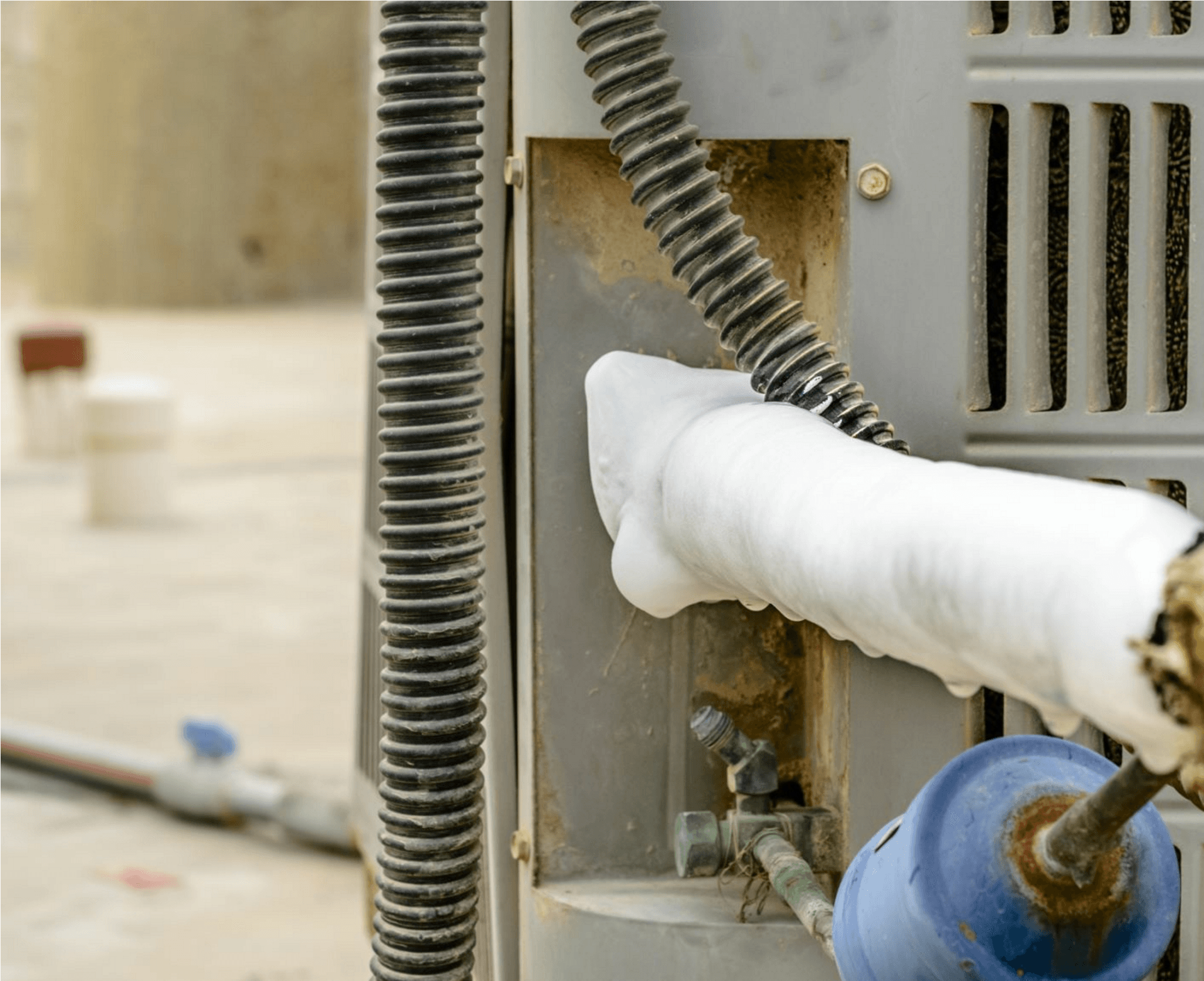In this article below you might get a bunch of worthwhile insight related to Why Is Ice On My Outside Air Conditione.

Intro
Discovering that your air conditioner pipeline is frozen can be worrying, particularly during hot summer season when you count on your air conditioner one of the most. Recognizing what to do in such a situation is important to avoid additional damage to your cooling system and ensure your comfort indoors.
Recognizing the Causes
A number of elements can contribute to the freezing of an AC pipe. Comprehending these causes can aid you address the problem efficiently.
Absence of Airflow
One usual root cause of an icy AC pipe is inadequate air movement. When the air movement over the evaporator coil is restricted, it can create the coil to drop below freezing temperature, resulting in ice development on the pipeline.
Low Refrigerant Levels
Insufficient refrigerant degrees in your AC system can likewise lead to a frozen pipe. Reduced refrigerant levels can trigger the stress in the system to go down, bring about the freezing of dampness on the evaporator coil.
Cold Weather Conditions
In colder climates, freezing temperature levels outside can contribute to the freezing of air conditioning pipes. If your a/c device is not effectively shielded or if there are leaks in the ductwork, cool air can infiltrate the system, causing the pipeline to ice up.
Dirty Air Filters
Dirty or clogged up air filters can restrict airflow in your AC system, resulting in various problems, including an icy pipe. It's essential to change or cleanse your air filterings system on a regular basis to make sure appropriate air movement and protect against ice build-up.
Indicators of a Frozen Air Conditioner Pipe
Identifying the signs of a frozen a/c pipe is important for prompt activity.
Minimized Airflow
If you see a significant decrease in air flow from your vents, it can suggest a frozen pipe.
Ice Buildup on the Pipe
Noticeable ice build-up on the refrigerant line or the evaporator coil is a clear indicator of a frozen air conditioner pipeline.
Odd Sounds from the Unit
Uncommon sounds, such as hissing or gurgling, coming from your a/c device can signify that there's ice present on the pipe.
Immediate Actions to Take
When confronted with a frozen AC pipe, it's important to act rapidly to prevent more damages to your air conditioning system.
Turning off the a/c
The primary step is to shut off your air conditioning unit to avoid the system from running and intensifying the concern.
Checking for Blockages
Examine the area around the indoor device for any blockages that might be obstructing air movement, such as furniture or curtains.
Thawing the Pipe
You can utilize gentle approaches like putting towels taken in warm water around the icy pipeline to aid thaw it gradually.
Preventive Measures
Taking preventive measures can help avoid future incidents of a frozen air conditioner pipe.
Normal Maintenance Checks
Set up routine maintenance checks with a specialist HVAC technician to make sure that your AC system is running effectively.
Transforming Air Filters
Routinely replace or clean your air filters to stop airflow limitations and keep optimum efficiency.
Protecting Exposed Pipes
If your AC pipes are revealed to chilly temperatures, consider protecting them to stop cold throughout winter season.
Seeking Professional Help
If DIY methods stop working to fix the problem or if you're not sure concerning exactly how to continue, it's best to seek aid from a qualified HVAC service technician.
When DIY Methods Fail
If your attempts to thaw the pipe or address other issues are not successful, it's time to call a professional.
Significance of Hiring a Professional HVAC Technician
A certified HVAC service technician has the experience and devices necessary to detect and fix issues with your air conditioning system securely and properly.
Conclusion
Taking care of a frozen AC pipe can be a frustrating experience, yet understanding how to react can help lessen damages and restore convenience to your home. By recognizing the reasons, recognizing the indications, and taking timely activity, you can successfully resolve the concern and stop future events.
What to Do If Your AC Line Is Frozen
Make Sure All Supply and Return Air Vents Are Open
If you notice problems with airflow, the first thing you should do is check your supply and return vents. Supply vents distribute clean, conditioned air throughout your home. As this air becomes stale, it’s pulled into the return vent, where it’s reconditioned before being sent back out through the supply vent.
When these vents are closed, air won’t flow in the home. Before examining your AC, check the vents in every room and ensure they’re all open.
Check for a Dirty Air Filter
Another possible cause of limited airflow is a dirty air filter. Your air conditioner’s filters catch elements you don’t want to breathe in, such as dirt and dust. Over time, filters can become clogged, ultimately blocking air from flowing in and out. The lack of airflow can then cause the entire coil to freeze and will completely restrict any air from moving through it. The AC may need to be powered off for one to two days to allow the coil to thaw after replacing the filter to allow proper functioning of the unit. This debris can also accumulate on your AC’s evaporator coil, requiring a more serious repair. In general, air filters should be cleaned regularly (about every two weeks).
Assess Your Outdoor Unit
In addition to checking your AC, assessing the outdoor unit is a good idea. Also known as the condensing unit, it works with your interior unit to release heat outside. An issue with the outdoor unit can result in rising internal temperatures.
Overgrown Shrubs or Clogged Leaves
From leaves and twigs to shrubs and debris, there’s no shortage of outdoor elements that can accumulate around your condensing unit. When these elements get lodged inside the unit, they can block airflow. Fortunately, removing the blockage can solve the problem.
Sounds of a Broken Fan
Shrubs and leaves aren’t the only things that can impede your outdoor unit’s airflow. If the fan is broken, the unit won’t be able to properly get rid of heat — which means the internal temperature won’t go down. First, make sure the fan is spinning. If it is, check for the following sounds of a broken fan:
Buzzing Rattling Screeching Hissing Clicking Preventative Measures
Nobody wants to deal with a frozen AC line. In addition to causing problems with your air conditioner, they require professional repairs. On the bright side, there are preventative measures you can take to help ensure this issue doesn’t arise in the first place.
https://www.coopergreenteam.com/blog/what-to-do-if-ac-line-frozen

We were brought to that editorial about What Do I Do If My AC Pipe Is Frozen from an associate on a different domain. Be sure to take the time to distribute this write-up if you enjoyed reading it. I am grateful for your time. Kindly pay a visit to our blog back soon.
Call Today